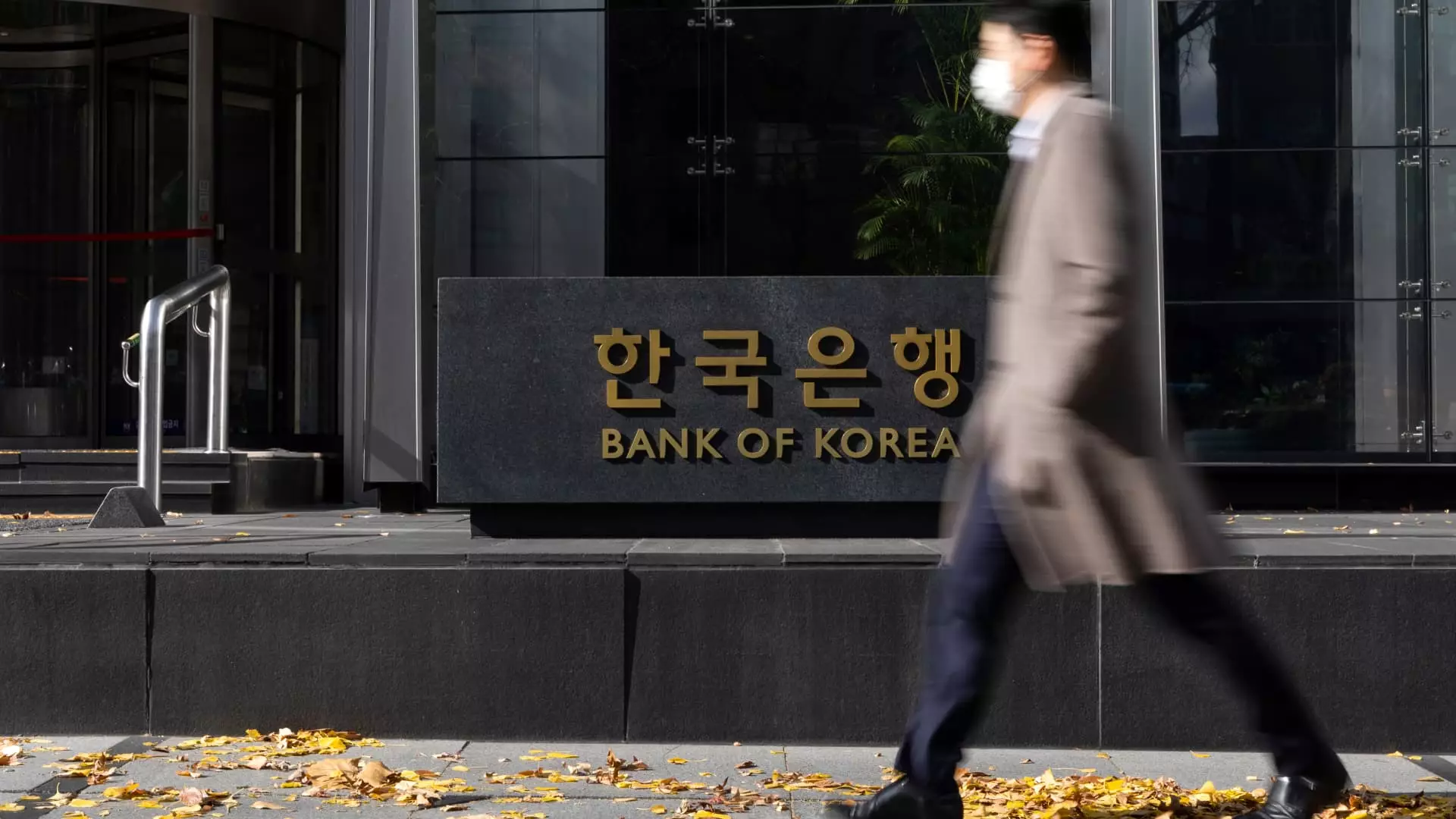On Thursday, the Bank of Korea (BOK) took a surprising step by reducing its benchmark interest rate by 25 basis points, aiming to invigorate an economy that has shown signs of sluggish growth. This marks the first instance of consecutive rate cuts since 2009, following a similar reduction during their October meeting. The economic landscape had already pointed toward a need for intervention, as a recent GDP growth figure revealed a disappointing increase of only 1.5% year-on-year, falling short of the 2% forecast by economists. This unexpected downturn prompted analysts to reassess the central bank’s strategy, leading to this latest decision, which was not anticipated by many in the financial community.
Revising Growth Projections
In alignment with the interest rate cut, the BOK has adjusted its outlook for economic growth. Expectations for GDP growth in 2024 have been scaled down from 2.4% to 2.2%, and the prediction for 2025 has also seen a decline, dropping from 2.1% to 1.9%. These revisions reflect a broader trend of disappointing economic indicators that suggest persistent headwinds. The BOK’s acknowledgment of intensified downward pressures on the economy is particularly telling; it underscores a growing concern that may lead to necessary adjustments in policy to stabilize the financial situation.
Interestingly, the new monetary policy comes at a time when inflation, a long-standing concern globally, has stabilized in South Korea. The latest figures reflect a notable decline, with inflation at its lowest since February 2021, recorded at 1.3% in October. This easing inflationary pressure gives the BOK some latitude to maneuver; however, the imminent risks posed by a depreciating South Korean won add a layer of complexity to their decision-making process. Currently trading around 1,392.17 against the U.S. dollar, the won has recently hit a two-year low, raising alarms amongst policymakers about potential broader economic ramifications.
Governor Rhee Chang-yong’s comments following the previous meeting highlighted a critical consideration as they navigate these turbulent waters: the rapid depreciation of the Korean won could heavily influence future rate cuts. With proactive measures being essential, the BOK has to balance between stimulating growth and maintaining currency stability. Observers anticipate that the central bank will continue to monitor these trends closely, as their next steps will be pivotal for both short-term recovery and long-term economic health.
Ultimately, South Korea’s recent interest rate cut exemplifies a current that runs counter to expectations, revealing a central bank ready to act amid unexpected challenges. As the BOK navigates this uncertain economic landscape, its efforts to stimulate growth while addressing the complexities of currency valuation will play a crucial role. The effectiveness of such measures will not only hinge upon domestic factors but will also be swayed by global economic dynamics, making for a continuous and cautious journey ahead. The outcome of these decisions could redefine South Korea’s economic trajectory in the months to come, checking whether these strategies can effectively foster resilience in a shifting global economy.


Leave a Reply